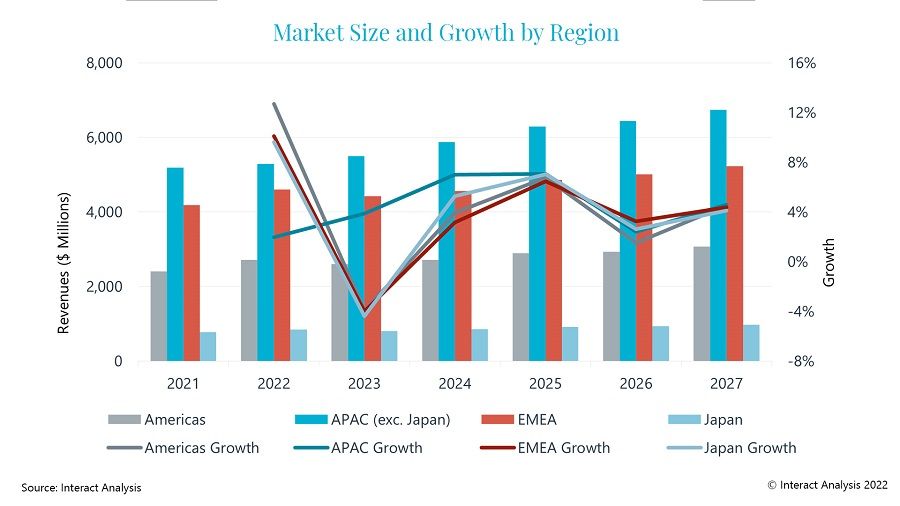Interact Analysis Looks at Global Geared Motors and Heavy-Duty Gears Market
Interact Analysis have recently released the 3rd edition of the Geared Motors and Industrial (Heavy-Duty) Gears report. This market study covers finished geared motors and gearboxes for general industrial use, including light- and heavy-duty products, as well as planetary gears, with the exclusion of precision gearboxes and loose gear parts. In this edition, amidst global macroeconomic uncertainty, market trend projections have become more volatile compared to previous years.
Market outlook varies across regions
In general, global sales revenue of geared products have seen strong rebounds in 2021 and 2022, with estimated year-on-year growth rates of 16.1 and 7.2 percent respectively. But the revenue is expected to decline in 2023 by 0.9 percent and resume growth amid fluctuations from 2024 to 2027. The average selling price has been increasing substantially for two consecutive years but is also predicted to start to fall in 2023. These trends of sales and prices, vary widely across the four major regions defined in our scope, the Americas, Asia Pacific (excluding Japan), EMEA and Japan.
APAC (exc. Japan) is likely to be the only region that will see growth in sales in 2023 (3.9 percent), as China is predicted to recover from the massive lockdowns in 2022. However, this recovery will likely remain weak, as the lingering pandemic has hit the economy hard and concerns about zero-Covid policies have created uncertainty around Chinese domestic demand.
Europe, Middle East, and Africa (EMEA) is the only region with a predicted price increase in 2023 – by 1.8 percent, due to the rising energy costs. However, EMEA is also estimated to encounter the most obvious contraction in unit sales in 2023, by 5.7 percent. The energy crisis in Europe has dampened demands especially from high energy-consuming industries. Overall, the revenue for geared products in the EMEA market is predicted to decline by four percent.
Over the forecast period, up to 2027, APAC (excluding Japan) is projected to lead market growth with a CAGR of 4.5 percent, driven by the accelerating pace of industrial automation in emerging Asian countries. The Americas market is expected to grow with a CAGR of 4.1 percent, driven by the big, stable economies. The expected CAGRs for Japan and EMEA are 3.9 and 3.8 percent respectively.




